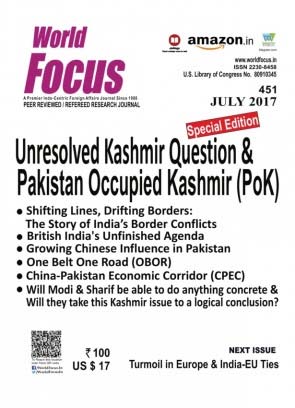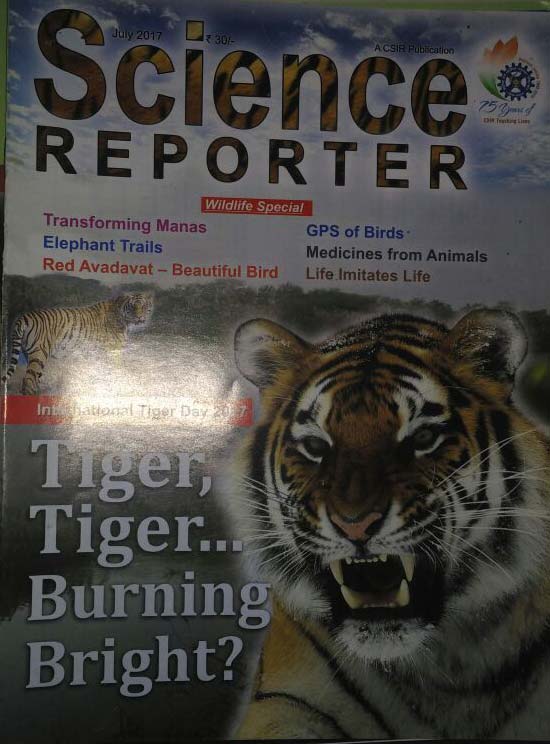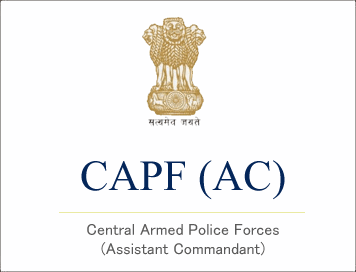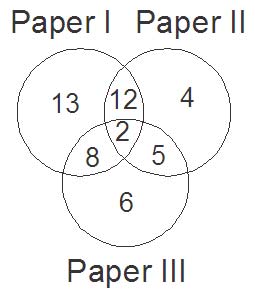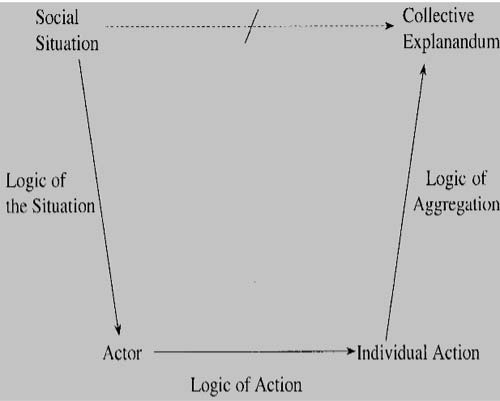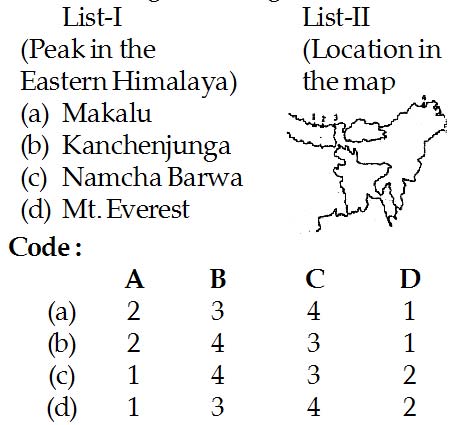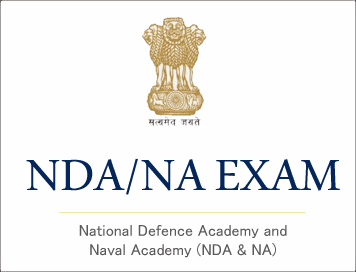
NDA/NA Exam Solved Papers - 2011- I - Paper I: General Ability
Test (Part-B)
Paper I : General Ability Test
Part A : English Language
Comprehension
Directions (Qs. 41 to 50) : Each of the following items consists of a
sentence followed by four words or group of words. Select the synonym of the
word (occurring in the sentence in capital letters) as per the context.
41. The song had a SOPORIFIC effect on the child.
(a) soothing
(b) terrific
(c) supreme
(d) sleep-inducing
42. His ALLEGIANCE to the Party was suspect from the very beginning.
(a) servility
(b) obedience
(c) loyalty
(d) passivity
43. Sympathetic criticism has a SALUTARY effect.
(a) premature
(b) terrible
(c) disastrous
(d) beneficial
44. His bad behaviour EVOKED punishment.
(a) escaped
(b) called for
(c) produced
(d) summoned
45. Please do not give any more FLIMSY pretexts for not-having done the work.
(a) weak
(b) strong
(c) justified
(d) impulsive
46. He was the court appointed lawyer for fifty-six INDIGENT defendants.
(a) Indian men
(b) poor
(c) guilty
(d) untried
47. The boy said that pain had ABATED.
(a) reduced
(b) vanished
(c) increased
(d) stabilized
48. He became known as an IMPLACABLE foe of fundamentalism.
(a) relentless
(b) pleasing
(c) dangerous
(d) courageous
49. The queen was aware of the INSOLENT behaviour of the lords.
(a) violent
(b) polite
(c) insulting
(d) frivolous
50. Modern man is PRAGMATIC in his dealings.
(a) practical
(b) playful
(c) causal
(d) clever
Part B : General Knowledge
51. Which one among the following is not a reason for practicing tank
irrigation in the Peninsular India?
(a) The undulating relief and hard rocks
(b) Little percolation of rain water due to impervious rock structure
(c) Most of the rivers of Peninsular India are perennial
(d) There are many streams which become torrential during rainy season
52. Identify from the following states of India through which the Tropic of
Cancer passes and arrange them from east to west :
1. Gujarat
2. West Bengal
3. Uttar Pradesh
4. Jharkhand
5. Madhya Pradesh
6. Bihar
7. Chhattisgarh
Select the correct answer using the code given below :
(a) 2 - 5 - 7 - 4 - 1
(b) 2 - 4 - 7 - 5 - 1
(c) 3 - 2 - 6 - 7 - 5
(d) 3 - 7 - 4 - 6 - 2
53. Hot deserts like Sahara, Arabia etc. receive very negligible amount of
rainfall. This is because they :
(a) do not receive moisture-bearing wind from the oceans.
(b) are the most rocky and barren areas of the Earth.
(c) are located on the tropical high’ pressure belt of the atmosphere.
(d) are not on the path of the monsoons.
54. The latitude is the angular distance of a point on the Earth’s surface,
north of south, of the Equator as measured from the :
(a) centre of the Earth.
(b) Equator.
(c) Tropic of Cancer of the Capricorn.
(d) Poles.
55. When an Ordinary Bill is referred to a joint sitting of both the Houses
of Indian Parliament, it has to be passed by a :
(a) simple majority of the total number of members of both the Houses present
and voting.
(b) two-third majority of the total number of members of both the Houses.
(c) simple majority of the total number of members of both the Houses.
(d) two-third majority of the total number of members of both the Houses present
and voting.
56. The Rowlatt Act was passed to :
(a) bring about agrarian reforms.
(b) curtail the nationalist and revolutionary activities.
(c) have a favourable balance of trade.
(d) put Second World War criminals on trial.
57. Which one among the following features of the Constitution of India is
indicative of the fact that the real executive power is vested in the Council of
Ministers headed by the Prime Minister ?
(a) Federalism
(b) Representative Legislature
(c) Universal Adult Franchise
(d) Parliamentary Democracy
58. In which among the following cases the joint session of both the Houses
of Parliament can be summoned?
1. To amend the Constitution
2. When a bill has been pending with one House for more than six months after it
was passed by the other
3. When both the Houses disagree on the amendments to be made in a bill
4. When a bill is passed by one House and is rejected by the other
Select the correct answer using the code given below :
(a) 1, 2 and 3
(b) 2, 3 and 4
(c) 2 and 3 only
(d) 1 and 4
59. The ‘Bombay Plan’ drafted by G.D. Birla and J.R.D. Tata emphasized :
(a) that the economy should be left to the dynamic investments by the private
sector in heavy industries etc.
(b) the public sector investment in infrastructure and heavy industries.
(c) annual planning
(d) that the private sector should foot the bill for intensive and low return
investments in the industrial sector.
60. Consider the following statements :
1. The Buddhists in Deccan excavated rock- cut Chaityas and the Vaishnavas,
Shaivas and Jainas imitated these in later centuries.
2. The Vaishnavas, Shaivas and Jainas excavated temples at sites far distant
from rock-cut Chaityas.
Which of the statements given above is/are correct ?
(a) 1 only
(b) 2 only
(c) Both 1 and 2
(d) Neither 1 nor 2
61. Consider the following statements :
1. The Champaran Satyagraha marked Gandhiji’s second appearance in India
politics as a leader of the masses.
2. The Champaran Satyagraha was launched to address the problems faced by Indigo
plantation workers.
Which of the statements given above is/are correct ?
(a) 1 only
(b) 2 only
(c) Both 1 and 2
(d) Neither 1 nor 2
62. Consider the following statements :
1. Charles Wood’s Despatch of 1854 laid exclusive emphasis on the development
of higher education in India and neglected primary and secondary education
2. The Carlyle Circular issued by R.W. Carlyle sought to check the spread of
revolutionary activities in educational institutions.
Which of the statements given above is/are correct?
(a) 1 only
(b) 2 only
(c) Both 1 and 2
(d) Neither 1 nor 2
63. Consider the following statements about Gandhiji’s thinking on
environment :
1. His environmental thinking is rooted in his larger philosophical and moral
thinking
2. He preferred sustainable environmental practices to nourish the soil and the
natural world
3. He laid emphasis on the rigorous ethic” of non-injury in our treatment of
animals
Which of the statements given above is/are correct ?
(a) 1 only
(b) 1 and 2 only
(c) 1, 2 and 3
(d) 2 and 3 only
64. Which one among the following is common to the treaty of Yandaboo (1826),
the treaty of Salbai (1782) and the treaty of Gandamak (1879) ?
(a) With these treaties various Indian powers formed alliances to defeat the
British
(b) These treaties enabled the British to control the South Asian powers
(c) These treaties expedited the spread of Indian culture abroad
(d) These treaties gave an essential boost to enhanced trade in South Asia
65. Which one among the following was the major demand of the Bardoli
Satyagraha (1928) organized under the leadership of Sardar Vallabhbhai Patel?
(a) Land to the Tiller
(b) Increase in the rates of labour wage
(c) Rollback of newly enhanced revenue rate
(d) Supply of agricultural inputs to the farmers at subsidised rate
66. Which one among the following statements is not correct?
(a) Gandhara Schood of Art owed its origin to the Indo-Greek rulers but the
real patrons of the school were the Kushans, especially Kanishka
(b) Rich carving, elaborate ornamentations and complex symbolism were not the
main features of the Gandhara sculpture
(c) The Graeco-roman architectural impact modified the structure of Buddhist
Stupas
(d) The artists of the Amravati School of Arts mainly used white marble
67. Which one among the following statements regarding the Eighth Five Year
Plan in India is not correct?
(a) The plan was postponed by two years because of political upheavals at the
centre
(b) It aimed at high growth of both agriculture and manufacturing sectors
(c) Its emphasis was on growth in export and import, improvement in trade and
current account deficit
(d) It set before itself the two principal objectives of ‘growth with stability’
and ‘growth with justice’
68. Which among the following statements is/are true with regard to WTO
membership?
1. All WTO members automatically receive the ‘most favoured nation’ status
2. Over 75% of WTO members are from developing countries. WTO membership allows
them access to developed markets at the lower tariff
Select the correct answer using the code given below :
(a) 1 only
(b) 2 only
(c) Both 1 and 2
(d) Neither 1 nor 2
69. TRIPS (Trade Related aspects of Intellectual Property Rights) agreement
is administered by :
(a) United Nations Conference on Trade and Development (UNCTAD)
(b) United Nations Organization (UNO)
(c) Word Trade Organization (WTO)
(d) World Bank (WB)
70. Consider the following statements :
1. The G20 was established in 2008 in the wake of the global financial crisis
led by the USA
2. It brings together the major advanced and emerging economies to stabilize,
the global financial market
3. India’s stand on Mutual Assessment Process (MAP) for measuring imbalances
between surplus and deficit economies in the Seoul conference of G20 in the year
2010 was firmly endorsed by all the nations
Which of the statements given above is/are correct ?
(a) 1, 2 and 3
(b) 1 and 2 only
(c) 2 and 3 only
(d) 3 only
71. Which one among the following statements is not correct ?
(a) In progressive waves, the amplitude may be constant and neighbouring
points are out of phase with each other
(b) In air or other gases, a progressive anti node occurs at a displacement node
and a progressive node occurs at a displacement antinode
(c) Transverse wave can ‘Be’-polarized while longitudinal wave can not be
polarized
(d) Longitudinal wave can be polarized while transverse wave can not be
polarized
72. A body initially at rest is acted upon by a constant force. The rate of
change of its kinetic energy varies :
(a) linearly with square root of time.
(b) linearly with time.
(c) linearly with square of time.
(d) inversely with time.
73. A jet plane flies through air with a velocity of 2 Mach. While the
velocity of sound is 332 m/s the air speed of the plane is :
(a) 166 m/s
(b) 66kkm/s
(c) 332 m/s
(d) 664 m/s
74. Which one among the following statements is correct ?
(a) Convex mirrors are used by doctors to examine oral cavity
(b) Concave mirrors ‘are used as reflectors
(c) Convex mirrors are used as reflectors
(d) Convex mirrors should be used for shaving
75. Light travels in optical fiber irrespective of its shape because it is a
device by which signals can be transferred from one location to another. It is
based on the phenomenon of
(a) diffraction of light
(b) refraction of light
(c) polarization of light
(d) total internal reflection of light
76. A man is at rest in the middle of a horizontal plane of perfectly smooth
surface of ice. He can move himself to the shore by making use of Newton’s :
(a) First law of motion
(b) Second law of motion
(c) Third law of motion
(d) First, second and third laws of motion
77. Which one among the following is the major cause of blurring and unsharp
images of objects observed through very large telescope at the extreme limit of
magnification?
(a) Air turbulence of earth’s atmosphere
(b) Poor optical polish achievable on large mirrors
(c) Poor tracking capacities of telescopes
(d) Varying density of air in the Earth’s atmosphere’
78. Bats can ascertain distances, directions, nature and size of the
obstacles at night. This is possible by reflection of the emitted :
(a) ultrasonic waves from the bat
(b) ultrasonic waves from the distant objects
(c) supersonic waves from the bat
(d) supersonic waves from the distant objects
79. When a moving bus suddenly applies brakes, the passengers sitting in it
fall in the forward direction. This can be explained by:
(a) the theory of relativity.
(b) Newton’s first law.
(c) Newton’s second law.
(d) Newton’s third ‘law.
80. The material used for electric fuse is an alloy of tin and lead. This
alloy should have :
(a) high specific resistance and low melting point.
(b) low specific resistance and high melting point.
(c) low specific resistance and low melting point.
(d) high specific resistance and high melting point
41. (d) 42. (c) 43. (d) 44. (b) 45. (a) 46. (b) 47. (a) 48. (a) 49. (d) 50. (a)
51. (c) 52. (b) 53. (d) 54. (b) 55. (a) 56. (b) 57. (b) 58. (b) 59. (b) 60. (a)
61. (b) 62. (b) 63. (c) 64. (b) 65. (c) 66. (b) 67. (d) 68. (d) 69. (c) 70. (c)
71. (d) 72. (b) 73. (d) 74. (c) 75. (d) 76. (d) 77. (c) 78. (a) 79. (b) 80. (c).
Courtesy : UPSC

